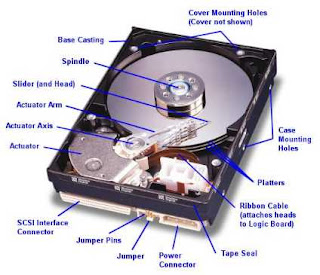CMOS checksum errors Explanation: A checksum is computed as an error-detecting code, to protect the BIOS settings stored in the CMOS memory . Each time the system is booted this number is recomputed and checked against the stored value. If they do not match, an error message is generated to tell you that the CMOS memory contents may have been corrupted and therefore some settings may be wrong. BIOSes react in different ways to encountering this sort of error. Some will warn the user and then continue on with whatever settings were in the CMOS. Others will assume that the settings that were in the CMOS were corrupted and will load default values stored in the BIOS chip "for safety reasons". The error message will indicate which your system is doing. Diagnosis: The most common cause of checksum errors in CMOS is a battery that is losing power. Viruses can also affect CMOS settings, and motherboard problems can also affect the stored values. Recommendation: Follow the instruc...
Posts
Showing posts from December 12, 2010
- Get link
- X
- Other Apps
FORMAT AND INSTALL SYSTEM SOFTWARE How to Format a Computer with Windows 7 Warning - Formatting hard drive information does not permanently erase the data. Even after a computer has been formatted, deleted files can be easily recovered. If you want to permanently wipe your hard drive by completely overwritting hard drive data, check out WipeDrive . To format your hard disk during Windows 7 installation, you'll need to start, or boot, your computer using the Windows 7 installation disc or USB flash drive. Turn on your computer so that Windows starts normally, insert the Windows 7 installation disc or USB flash drive, and then shut down your computer.
Restart your computer.
Press any key when prompted, and then follow the instructions that appear.
On the Install Windows page, enter your language and other preferences, and then click Next .
If the Install Windows page doesn't appear, and you're not asked to press any key, you might need to change some system setti...
- Get link
- X
- Other Apps
Microsoft DOS fdisk command Quick links About fdisk Availability Syntax Secret fdisk switches Examples Additional information FAT32 information Fdisk simulation Technical Support About fdisk Fdisk is one of the more commonly used MS-DOS commands, even today with Windows 95 and Windows 98. Fdisk allows the user to delete and/or create partitions on the hard disk drive . MS-DOS 3.3x and below used fdisk.com MS-DOS 4.x and above uses fdisk.exe Additional information on how a hard disk drives and how they work, troubleshooting, and more can be found on our hard disk drive page .

